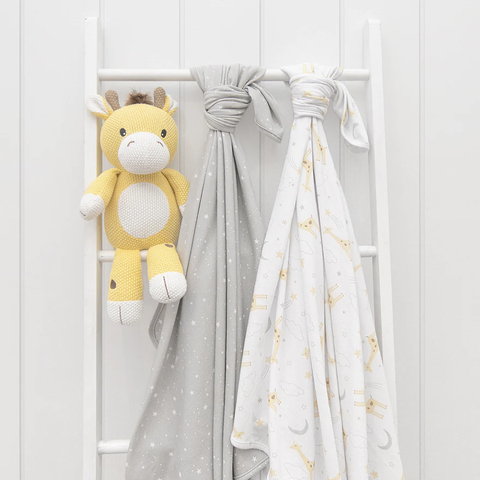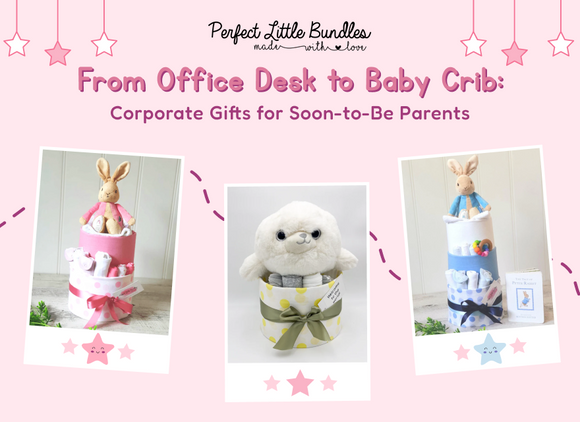
Swaddle Your Baby for Quality Sleep
Fiona Cassell
Hey, tired parents, let's talk about sleep—or rather, the lack of it. You know those nights when you're bouncing your bundle of joy for what feels like hours, desperately trying to coax them into a peaceful slumber? We've all been there, bleary-eyed and wishing for just a few hours of uninterrupted shut-eye. Well, what if I told you there's a secret weapon in your parenting arsenal that could help you reclaim those precious Zzzs? Enter baby swaddling.

The Benefits of Swaddling
Let's dive into why swaddling is more than just a cute Instagram trend—it's a game-changer for sleep-deprived parents everywhere.
The Baby Swaddling Benefits:
- Promotes Longer Sleep Periods: Swaddling helps prevent the startle reflex, a natural response in newborns that causes them to suddenly jerk awake. By securely wrapping your baby in a swaddle, you provide gentle pressure around their body, which soothes their nervous system and reduces the likelihood of startling awake. This means more uninterrupted sleep for your baby and much-needed rest for you as well.
- Enhances Baby Sleep Quality: Swaddling creates a cozy cocoon-like environment that mimics the sensation of being in the womb. This snug wrapping helps your baby feel safe and secure, promoting feelings of comfort and relaxation. As a result, they're more likely to drift off into a deep, restful sleep, characterized by longer sleep cycles and less restlessness throughout the night.
- Reduces Anxiety: Babies thrive on routine and familiarity, and swaddling provides just that. The snug wrapping of a swaddle blanket creates a sense of containment and security for your baby, reminiscent of the comforting confines of the womb. This gentle pressure helps calm their nervous system and reduces feelings of anxiety, allowing them to relax and settle down more easily for sleep.
- Improves Sleep Patterns: Swaddling can help regulate your baby's sleep patterns by establishing a consistent bedtime routine. The act of swaddling signals to your baby that it's time to wind down and prepare for sleep, setting the stage for a peaceful night's rest. Over time, this consistent routine can help regulate your baby's internal clock, making bedtime more predictable and manageable for both of you.

The Importance of Swaddling for Newborns
Newborns are like little sponges, soaking up everything around them. From the moment they enter the world, they're bombarded with new sensations, sounds, and stimuli. While this can be an exciting time of discovery, it can also be overwhelming for your tiny bundle of joy. That's where swaddling comes in.
Swaddling offers a sense of comfort and familiarity during those early weeks and months when everything is new and overwhelming. Think about it from your baby's perspective: they've spent the past nine months in the cozy confines of the womb, surrounded by warmth and security. Suddenly, they're thrust into a world that's bright, noisy, and unfamiliar.
Additionally, swaddling can help regulate your baby's body temperature, keeping them warm and cozy during those first few weeks when they're still adjusting to the outside world. This can be especially beneficial for premature babies or those born during the colder months.

Expert Swaddling Tips for Babies:
Now that you're sold on the Baby swaddling benefits, let's talk about how to nail the technique like a pro.
- Choose the Right Swaddle: When selecting a swaddle blanket, opt for one made from soft, breathable fabric like organic cotton or bamboo. Ensure the fabric is gentle on your baby's delicate skin and allows for proper airflow to prevent overheating, especially during warmer months.
- Master the Technique: Practice wrapping your baby snugly but not too tightly. Start by laying the swaddle blanket in a diamond shape, placing your baby's shoulders just below the top edge. Secure one arm down by their side, then fold the corner of the blanket over their body and tuck it under the opposite side. Repeat with the other arm, making sure there is enough room for their hips and legs to move freely.
- Timing is Key: Swaddle your baby before it becomes overtired or overstimulated. Look for signs of drowsiness, such as yawning, rubbing their eyes, or becoming fussy. Swaddling a calm baby is much easier than trying to soothe a crying, squirming one.
- Monitor Temperature: Pay attention to the room temperature to ensure your baby is comfortable while swaddling. Aim for a room temperature between 68 to 72 degrees Fahrenheit (20 to 22 degrees Celsius). Feel your baby's chest or back to gauge their temperature – they should feel warm but not sweaty or clammy.
- Transition Gracefully: As your baby grows and starts showing signs of rolling over, it's time to transition out of swaddling to avoid any safety hazards. Start by swaddling with one arm out, then gradually transition to both arms out before moving to a sleep sack or wearable blanket. This gradual transition helps your baby adjust to sleeping without the swaddle while still feeling secure.
And now, let's take a moment to shine the spotlight on ES Kids Crochet Blankets by Perfect Little Bundles. These beautifully crafted blankets are not only soft and cozy but also perfect for swaddling your little one in style. Made from high-quality materials, they provide the perfect blend of comfort and warmth, ensuring your baby sleeps soundly through the night.
Summing Up
In conclusion, swaddling isn't just about wrapping your baby in a blanket—it's about creating a cozy cocoon where they can sleep peacefully and grow happily. So why wait? Embrace the magic of swaddling and watch as your little one drifts off into dreamland, leaving you with more time to catch those much-needed Zzzs.


